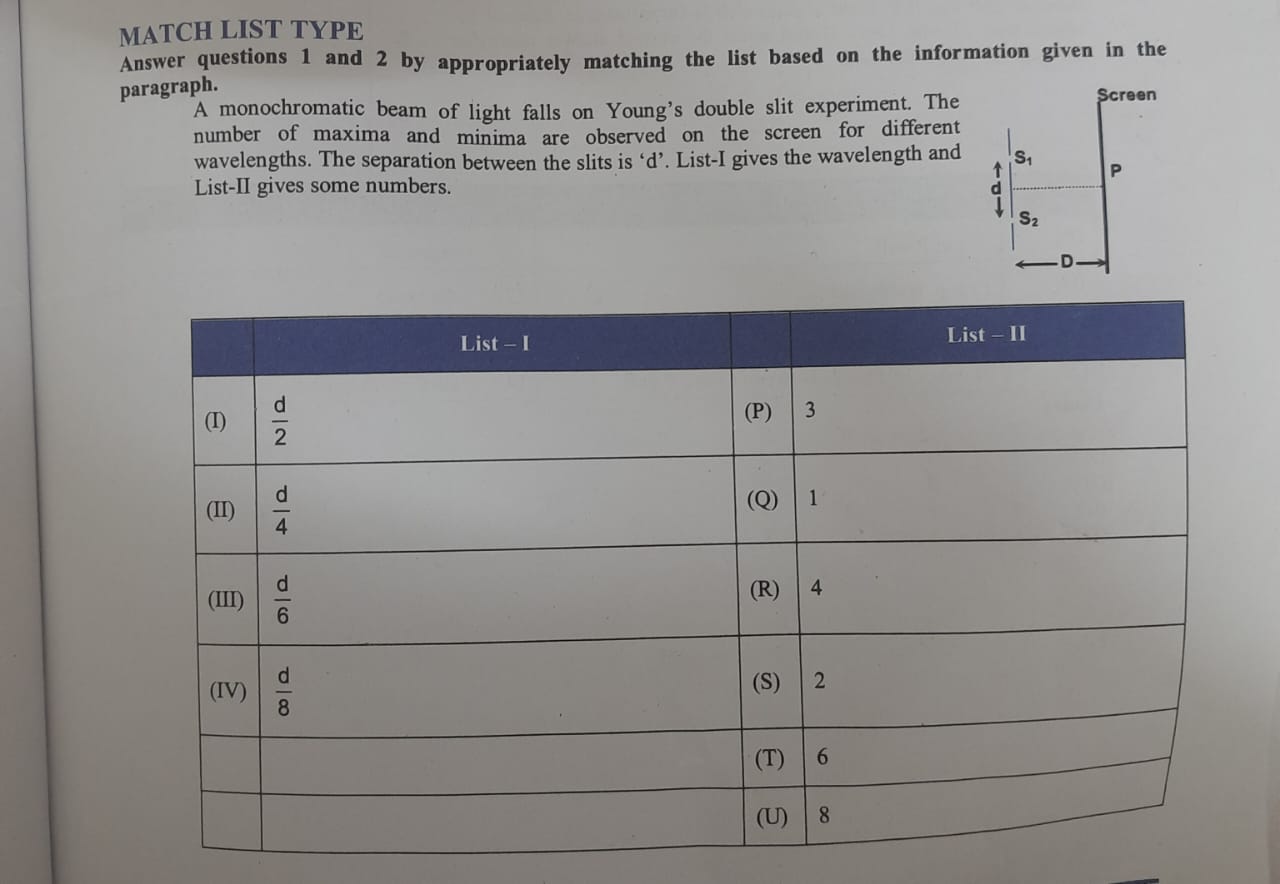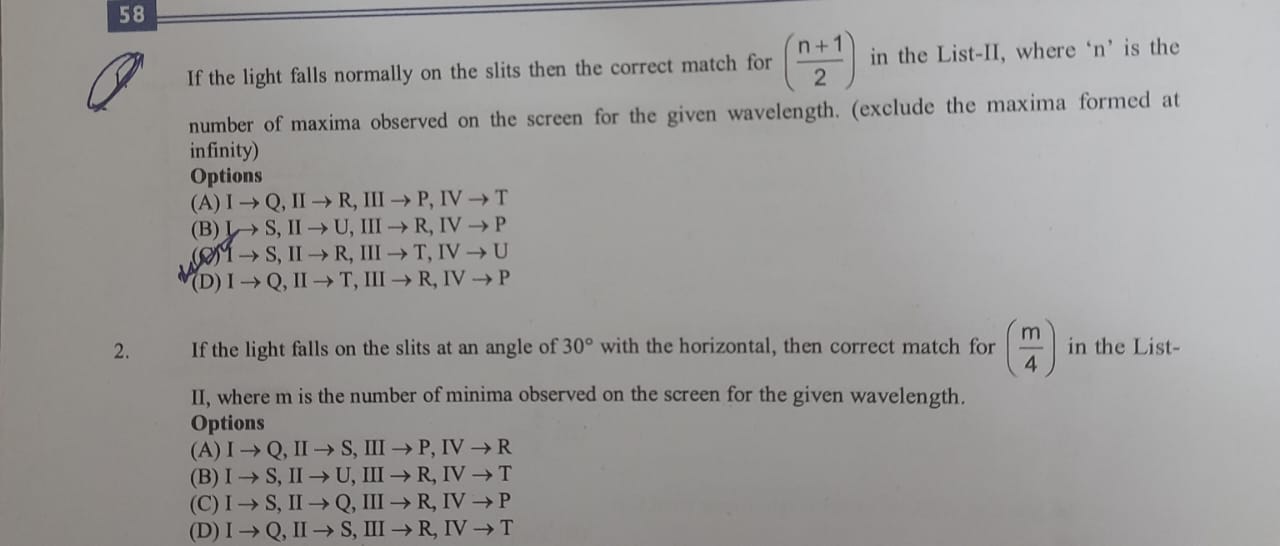wave optics
for 1st part, it says it falls normally. does that means ki sin theta in dsintheta = d?
agar yahi mtlb ha, then what is the question asking, im confused in that.
jese when lambda = d/2, n comes out to be 2, so 2+1/2= 3/2 ye to match ni hua kisike
agar yahi mtlb ha, then what is the question asking, im confused in that.
jese when lambda = d/2, n comes out to be 2, so 2+1/2= 3/2 ye to match ni hua kisike

